DIY carpet-sample craft: checkers game

This checkerboard is made from two free carpet samples. I’m excited that my DIY checkerboard rug idea actually worked. I was a little trepidatious about cutting carpet. I thought it would be difficult and require special tools. I was wrong on both counts. Cutting the carpets was the easiest part of making this checkers set. I made the entire game from supplies I already had on hand. I love it when it works out that way. And it only took half a day to make. (This post contains affiliate links. If you use these links to buy something, I may earn a small commission. You can read my full disclosure here.)

Sure, a black and ivory checkerboard would be more classic, but I already have plans for those carpet samples. Plus, the blue and green is fun and unexpected. By the way, if you can’t find carpet samples to make any of these crafts, FLOR modular carpet tiles work just as well, and they come in better colors.

A carpet checkerboard and felt checkers makes for the quietest checkers game you’ve ever heard. And it’s transportable because the felt doesn’t slide off of the carpet. If you’re more of a chess person, you can buy chess pieces or make your own.
Click here for my first carpet-sample craft. More carpet crafts coming soon.
How to make a carpet checkerboard
SUPPLIES & TOOLS
INSTRUCTIONS

1. Using a self-healing mat, drywall T-square, and a utility knife, cut four strips of carpet 1½ inches wide. Repeat for your second carpet. (As you may have already noticed. You have enough carpet to make two checkerboards. Go for it.)
Tip: I highly recommend the folding utility knife in the picture. I bought it because I knew I would be cutting lots of carpet, which means changing the blade often. This one has a quick release for changing blades. So much faster! Plus it feels good in the hand. I tossed all my old utility knives.

2. Slide the strips along the T-square and cut 1½ inch squares of carpet.

3. Arrange the carpet squares in a 8×8 checkerboard pattern. You’re going to glue the carpet samples to each other before gluing on the backing.
Tip: At this point, it’s going to look a bit messy with the loose carpet threads and fuzz. Don’t cut or pull any loose threads yet. You’ll take care of that later.

4. Apply glue along the base of one side of a carpet square. Press the square next to it into the glue. Make sure they are properly aligned in a straight line. Repeat until you have one full row of carpet squares glued together. Repeat for all eight rows.

5. Glue the strips to each other in the same way as above. Glue 2-3-square lengths at a time.
Tip: Don’t try to do the whole row at once, or the glue will cool before you can place the entire row.

6. Place your checkerboard on top of your felt. Using a rotary cutter, trim around the edges of the checkerboard.
Tip: Cut your felt backing about ¼ inch larger than your checkerboard. It makes for a cleaner-looking backside.

7. Hot-glue the felt onto the back of your checkerboard, making sure that the checkerboard is placed in the center.
Tip: Don’t try to glue the whole sheet of felt at once. To avoid obvious hot-glue lines, move the hot-glue gun quickly back-and-forth, making thin lines of glue close together in a 3-4-inch swath. Press the felt down. Repeat for the next swath, and so on until you’ve glued the entire piece of felt on to the back.

8. I figured this trick out too late, so you’ll notice that my rope ends look kind of bulbous and messy. First, push back your rope’s cotton sheath about an inch to reveal the nylon core. Trim off that inch of nylon strands. (Or pull it out altogether. I hate that stuff.) Then pull the cotton sheath back to where it was.

9. Carefully trim a clean end on your rope with a sharp pair of scissors. Apply a generous dab of glue to the end and smooth it all around the loose threads to make them stick together and keep them from fraying. Let dry.

10. To glue the rope to the checkerboard, start a few inches from the end of the rope and a few inches from the corner of the checkerboard. Apply hot glue to the base of the carpet (just like you did when assembling the carpet squares), and press the rope into the glue. Apply glue to only a few squares at a time.

Stop when you’re a couple squares away from getting all the rope glued on. Cut the rope an inch or so longer than you need. Then repeat steps 8 and 9 above to stop that end from fraying. On step 9, cut the rope to exactly the length you need for it to reach the other end. Once the glue is dry, hot glue the tips of rope to each other, then continue gluing the rope on to the checkerboard.

11. Now is the time to trim any loose fibers or threads. Trim, don’t pull. You don’t want to unravel the carpet. Vacuum your little checkerboard rug to clean it.
How to make felt checkers
SUPPLIES & TOOLS
INSTRUCTIONS

UPDATE 4/21/13: These checkers still reek like paint, and it’s been more than two weeks. It must be some kind of chemical reaction with the glue used to make the felt pads. I recommend you skip the spray paint and either buy felt pads in two different colors or glue colored felt to the top and bottom of them. Or lose the felt pads altogether and glue felt circles to the bottom of buttons, bottle caps, etc.

1. Peel off the backing and adhere 12 felt pads to the ivory felt and 12 to the black felt. Trim the colored felt around the outside edge of each felt pad.
Tip: Don’t use the fuzzy kind of felt. Use the stiffer, recycled kind. It adheres much better.

2. Protect your surface with a drop cloth or newspaper. Hold one felt checker piece in a gloved hand and spray all sides with black spray paint. Rub the paint into the felt with your gloved hand. Let dry and repeat for 12 checker pieces. Switch to ivory paint, and repeat on the remaining 12 pieces.
Tip: Follow all the instructions on the can of paint, except in this case, you need to spray from only about 3 inches away from the checker piece. But don’t over-saturate the colored-felt side of the checker or it will start to lose adhesion.
How to make a checkers tin
SUPPLIES & TOOLS
INSTRUCTIONS

1. Download and print the designs on a full-sheet label. Cut the circles out along the outside lines. Peel off the backing and adhere the circles to the tin. The labeled one goes on top, and the blank checkered pattern goes on bottom (to cover up the ingredients list).
Tip: Most likely you don’t have the same tin I do, so trim the labels as necessary. You can still use these labels on a square or rectangle tin or box.

2. Let the checkers air out for at least a week (to get rid of the paint smell), then place them in the tin. You’re done! This set would make a great Father’s Day or birthday gift.

Share this story
Reader Gallery
Made this project? Email your photo(s) to monica (at) craftynest (dot) com, and I’ll share your version here!

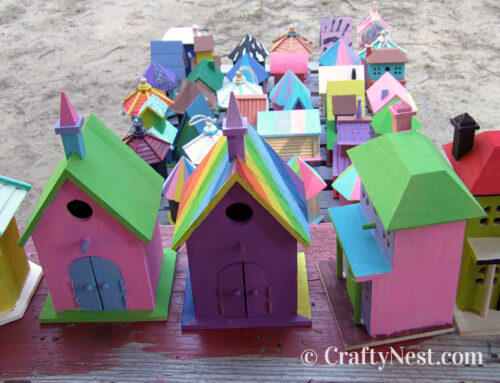
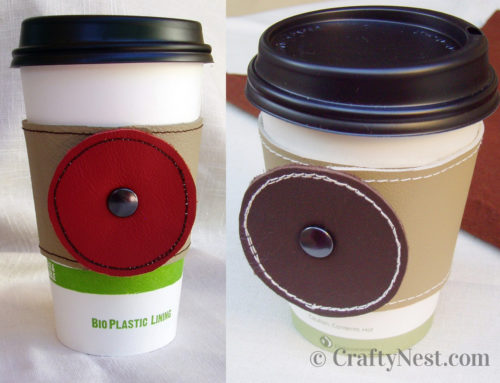
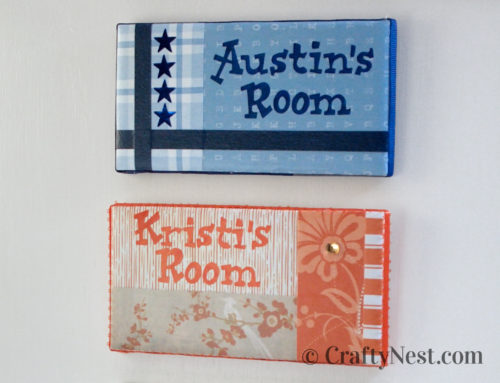
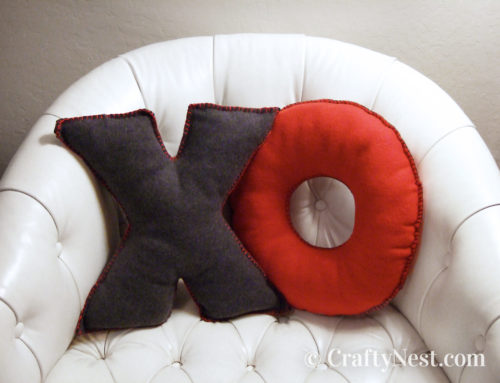
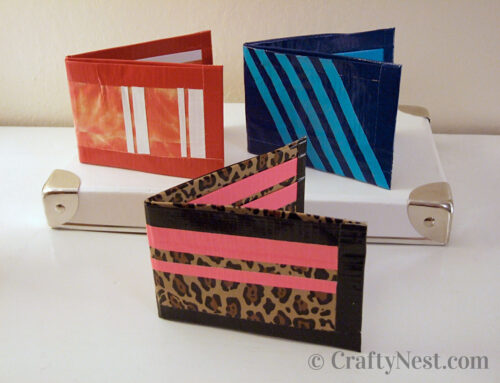
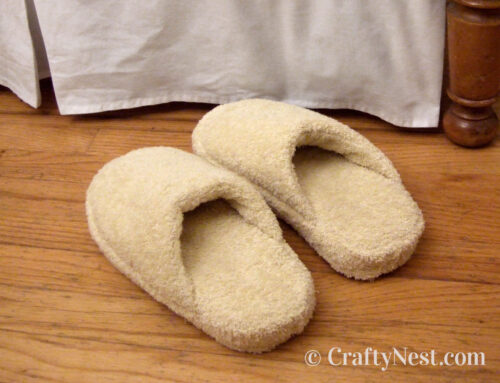
Leave A Comment